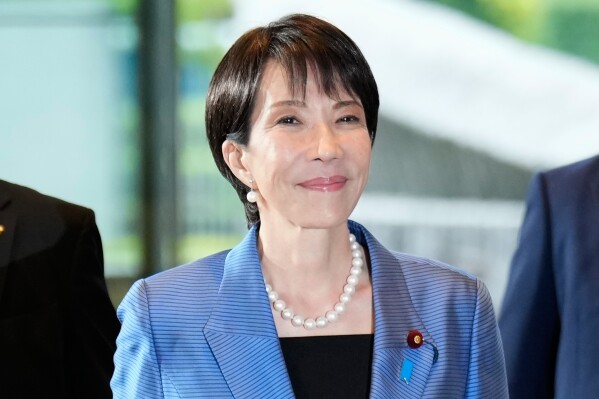
- For the very first time, Japan has a female Prime Minister, Sanae Takaichi, a conservative leader from the Liberal Democratic Party (LDP).
- Takaichi has reiterated Japan’s commitment to maintaining strong relations with the United States.
- In essence, Sanae Takaichi’s rise is a revolutionary moment for Japanese politics, symbolising a breakthrough for women’s representation in leadership.
A watershed political development has taken place in Japan. For the very first time, Japan has a female Prime Minister, Sanae Takaichi, a conservative leader from the Liberal Democratic Party (LDP). She secured 237 votes in the 465-member chamber, marking a decisive victory. Her success comes after an earlier unsuccessful attempt within the LDP, when she had contested for the Prime Minister’s post but failed to secure the required majority. This time, however, she managed to reach the finish line.
Her victory is significant because it marks a remarkable change in Japanese politics, especially for the LDP, which has recently been facing a rough phase characterised by political instability and corruption scandals involving former leaders. Over the past five years, Japan has seen three Prime Ministers from the LDP, reflecting the party’s internal turmoil and contributing to growing anti-incumbency sentiments among the public. This sentiment was evident in the recent Senate elections, where the LDP lost its majority in both houses and became dependent on coalition partners.
One of the major challenges Takaichi faced before her victory was the sudden withdrawal of support from the LDP’s coalition ally, the Komeito Party. This development created significant uncertainty for her candidacy. However, a moment of relief came when the Japan Innovation Party, a right-wing party based in Osaka, decided to extend support to the LDP, paving the way for her win.
While Takaichi’s rise is a landmark moment for Japan, it also comes with immense responsibility. The country is currently grappling with persistent inflation, economic stagnation, and demographic decline, all contributing to deep socio-economic challenges. Several previous LDP administrations attempted to address these issues but failed to deliver meaningful results, as seen during the brief tenure of former Prime Minister Kishida.
Takaichi has emphasised hard work-life balance and has demanded that the Japanese need to work more. She has announced a 92 billion dollar economic stimulus package aimed at controlling inflation and reviving growth. In a historic move, she appointed Satsuki Katayama as Japan’s first female Finance Minister and included two women in her cabinet, signalling her intent to promote gender inclusivity in leadership.
On immigration and national security, Takaichi has taken a firm stance. She has vowed to act strictly against illegal immigration and strengthen border protection. Known for her conservative and nationalist outlook, Takaichi is considered ideologically close to the late Prime Minister Shinzo Abe. She is expected to maintain a tough stance toward China and prioritise defence cooperation. Her first major diplomatic engagement will be at the Asia Pacific Economic Cooperation (APEC) summit in South Korea, where she is expected to meet U.S. President Trump.
Takaichi has reiterated Japan’s commitment to maintaining strong relations with the United States. However, the return of President Trump, known for his unpredictable foreign policy approach, has created concerns among U.S. allies, including Japan. There is a growing realisation in Tokyo that Japan cannot rely solely on the U.S. for its defence and must strengthen self-reliance in strategic and technological sectors.
Along with this, Japan would also like to further advance its relationship with existing strategic partners such as India, South Korea, and other Indo-Pacific members like Australia. Prime Minister Modi has also congratulated the new Japanese Prime Minister on her victory and appointment. Both India and Japan wish to continue their strong relationship; however, the new Japanese Prime Minister also aims to build a more robust and resilient partnership between the two nations.
Sanae Takaichi has been vocal against China, which has lately been one of the belligerent players in the South China Sea region. Japan’s proactive stance against China and its growing involvement in Asia-Pacific affairs could serve as a key catalyst in strengthening India–Japan relations.
In essence, Sanae Takaichi’s rise is a revolutionary moment for Japanese politics, symbolising a breakthrough for women’s representation in leadership. Yet, she faces formidable challenges ahead, from economic revival and demographic reforms to navigating complex foreign policy dynamics, which will test her leadership and the resilience of Japan’s democracy.
Aayush Pal is a freelance writer on contemporary geopolitical developments. The views expressed in his work are entirely his own.
